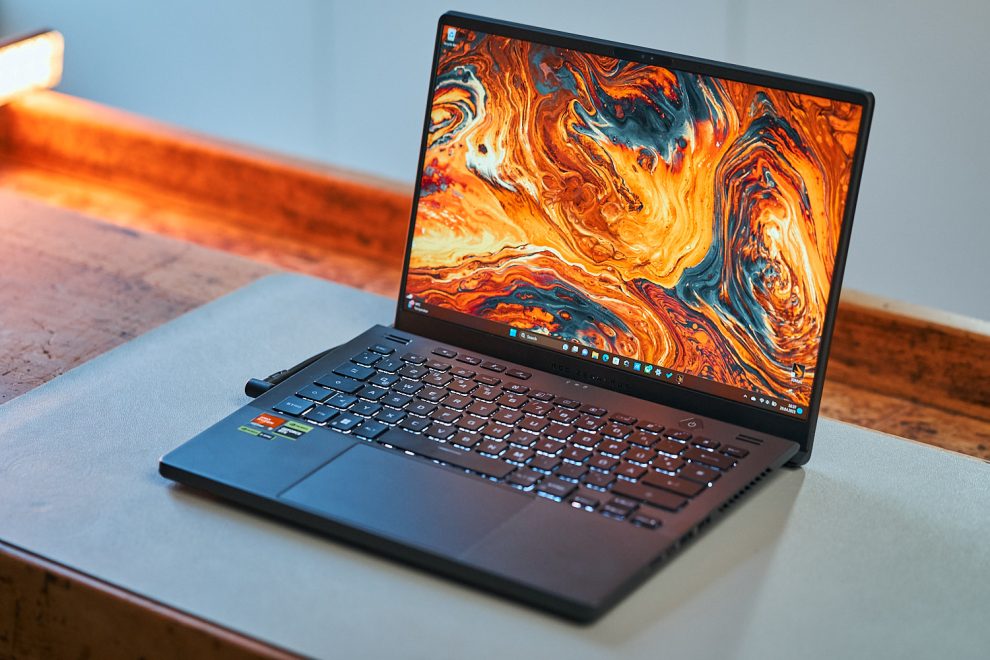In the world of laptops, Apple’s MacBook Pro has long been the gold standard, especially for creative professionals. But in recent years, gaming laptops like the Asus ROG Zephyrus G14 have evolved from bulky machines to slim, powerful options that can compete with the MacBook Pro.
The Zephyrus G14 packs impressive specs like an AMD Ryzen 9 processor and RTX 2060 graphics into a super portable 14-inch magnesium body. It makes a compelling case against the MacBook Pro for gamers and creators alike.
Read on to see how the Zephyrus G14 stacks up against the latest MacBook Pro.
A Closer Look at the Asus ROG Zephyrus G14
When you first lay eyes on the Zephyrus G14, it looks nothing like a bulky gaming laptop. The sleek, professional design belies the power underneath its hood:
- 14-inch 120Hz gaming display for smooth framerates
- AMD Ryzen 9 4900HS CPU matched with an Nvidia RTX 2060 GPU
- 16GB of RAM and 1TB of fast SSD storage
- Thin 18.9mm magnesium-aluminum alloy chassis
- Backlit keyboard with per-key RGB lighting
It has the specs to play AAA games at high settings, while staying portable at just 3.5 pounds. The professional design means it won’t stand out in a boardroom or coffee shop like typical gaming laptops.
Zephyrus G14 vs. MacBook Pro: Performance and Hardware
Let’s see how the Asus Zephyrus G14’s specs compare against Apple’s popular MacBook Pro 16-inch model in key areas:
Processing Power
The Zephyrus G14’s octa-core AMD Ryzen 9 outperforms the 6-core Intel Core i7 found in similarly priced MacBook Pros. The Ryzen CPU tears through intensive tasks like video editing, 3D modeling, and development workloads.
Graphics Performance
Thanks to Nvidia’s RTX 2060 graphics, the Asus blows away the MacBook Pro’s integrated graphics. It’s a much better choice for gaming or running GPU-accelerated creative apps.
Display
The Zephyrus sports a super fluid 1440p 120Hz gaming panel up to par with many desktop monitors. Meanwhile the MacBook Pro has a responsive but lower resolution 16-inch Retina display.
Battery Life
Battery life is a clear win for the MacBook Pro, thanks to Apple’s hardware/software integration. You’ll get over 10 hours of light use compared to about 6-8 hours with the Zephyrus.

Who Should Choose the Asus ROG Zephyrus G14?
If processing power and graphics performance are your top priorities in a laptop, the Asus Zephyrus G14 easily beats the similarly priced MacBook Pro. It’s the better pick for:
- Gamers who want AAA gaming on a thin and light laptop
- Creators working with video, 3D modeling, CAD, game dev engines
- Developers, engineers, analysts using intensive computing apps
Who Should Choose the MacBook Pro
The MacBook Pro remains an excellent choice if you need a premium laptop and already live in Apple’s ecosystem. Go for the Mac if you value:
- Seamless integration with other Apple devices
- Longer battery life for mobility
- Access to Mac/iOS-exclusive software
- Superior touchpad and keyboard ergonomics
The Rise of Thin and Powerful Gaming Laptops
Just a few years ago, the idea of a 14-inch gaming laptop going toe-to-toe with a MacBook Pro would have been laughable. But Nvidia’s Max-Q graphics initiative changed everything. By optimizing hardware and software, they managed to stuff desktop-class graphics performance into impossibly slim gaming rigs.
Asus took things a step further with their Zephyrus lineup. An innovative cooling system keeps the components from overheating or throttling performance. Clever engineering like the bottom-mounted keyboard and ErgoLift hinge improves airflow. The result is a no-compromise Windows laptop for work and play.
More Options for More Users
While the MacBook Pro is still the go-to choice for many, gaming laptops now offer a compelling alternative. And competition spurs innovation – with Apple rumored to be testing in-house Arm-based chips for future MacBooks.
More choice is always good news for consumers. And thinner gaming laptops with narrower bezels can now pull double duty as attractive workhorses. For many shoppers, their next “non-gaming” laptop may just happen to have an RTX 30-series GPU inside!
















Add Comment